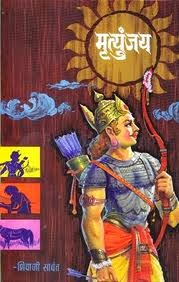Sakthan Thampuran Palace:
 |
| Sakthan Thampuran Palace, Thrissur |
In his lifetime, the ruler is reported to have maintained cordial with European powers such as the British and also with rulers of neighbouring kingdoms, such as the Samoothiri kings of Kozhikode, the rulers of Mysore and Travancore. Within the palace, there are adequate references alluded to the rulers of Mysore, who have stayed in the palace at different points of time. Another popular story is Tipu Sultan, who entered the palace forcefully with his troops. Interestingly, it is the flag mast which the tyrant erected on entering the palace, which is seen as one enters the palace premises.
The territorial expansion of the erstwhile Cochin dynasty saw the construction of this palace, which back then, was the northernmost, located in 'faraway' Thrissur. In its time, the city was famed for its wilderness and miscreants. Yet, the construction of the palace witnessed the transfer of the capital from Tripunithura to Thrissur, after clearing a 60 acre teak forest around the Vadakkumnatha Shiva Temple. Surrounding the palace today, is a circular concrete roundabout known as the Swaraj Round. The roundabout, has been structured with a vision that it would be impossible to pass through Thrissur without perambulating Vadakkumnatha Shiva.
The Vadakkechira Kovilakam, as the palace was formerly known in Malayalam, is built in the traditional architectural style of Kerala. In doing so, it liberally borrows from Dutch architecture. Hence, the palace is one of the few monuments in Kerala which hosts the rare Indo-Dutch architectural style. This is particularly visible in its arch vaults and porticos. The palace has two floors, each of them characterised by high roofs, extra thick walls, spacious rooms and floors paved with Italian marbles. The thing that my caught attention here was the naalukettu, transporting one back to a time when joint families were the norm. Interestingly, the naalukettu, ootupura (dining hall), uralpura (work area) and the kitchen follow the tenets of vaastu shastra. The ootupura and the kitchen have household utensils, made from copper and bronze, which were used by the royal family.
Given that most royal palace now work as museums, interesting memorabilia about the erstwhile Kochi rulers are kept here. In addition to this, there are also megalithic materials which were excavated in many parts of Kerala. The walk around the palace introduces to a number of galleries, such as the bronze gallery, with sculpted statues in bronze, some of which date back to the early 12th to 18th centuries. The most interesting gallery, however, is the sculpture gallery with some intricately sculpted granite structures, dating back to the 9th century and an epigraphy gallery, showcasing the growth and evolution of writing.
Lastly, the palace has been restored and is maintained by the Kerala State Archaeological Department. As a protected monument, though devoid of any significant architectural or cultural appeal, the Sakthan Thampuran Palace holds its own with its emphasis on maintaining its stylistic importance while achieving a perfect balance with the traditional and modern by retaining a rare charisma which makes it the custodian of rare antiques, each with its own story to narrate to its visitors.


Comments